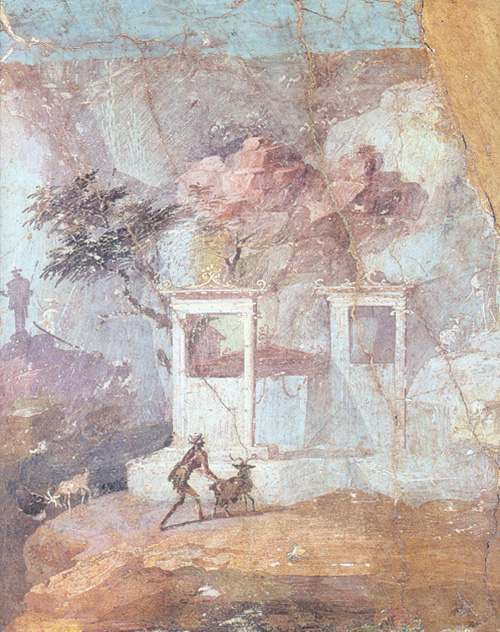Unlike paintings that are seen in galleries or museums, Roman wall-painting has a socio-aesthetic function that is site-specific. Therefore, in order to understand their cultural significance we must try and enter the historical matrix in which they functioned. Since the paintings are location-specific an important element in this matrix is undoubtedly the environment that housed them – the domus, the combination of house and household.
Understanding the domus as a framing device is an essential step towards understanding the wall-paintings. This is not, however, an easy task since the internal and external forces that shaped the domus are themselves highly conjectural issues. What is not conjectural is that the wall-paintings provided the visual backdrop for the daily life of the domus and therefore analysing them in purely formal terms is not appropriate.
Living as we do in a post cinematic, virtual reality world, it is difficult for us to comprehend the extent to which, in ancient times, a single image had the potential to evoke narrative action. From an experiential point of view that door is probably closed to us. However, we can point to the early days of cinema and the wonderment that accompanied its viewing, as analogous to the depth of experience engendered by still-imagery in ancient times. I am not referring to the type of deep emotional experience that art is still capable of exerting upon its viewer or the type of swooning before art with which Stendhal’s name has become synonymous. I am referring to the modern mind's blasé ambivalence towards the static two-dimensional image. No such ambivalence seems to have existed in ancient times. Whilst Philosophers such as Plato contested the significance of the reproduced image in moral terms, the general population on the other hand eagerly produced and consumed them. Philostratus, writing in the second century AD, provides us with numerous examples of the kind of vivid exegesis associated with pictorial imagery. When asked by his audience to talk about the paintings before them, he skillfully narrates them in a way that evokes the kind of action that the modern reader would instantly recognise and associate with film action.
This significant mind shift inevitably casts uncertainty on any investigation into the contemporary social function and reception of the wall-paintings. Is it possible to revisit the territory known as Roman wall-painting, or is it irretrievably locked in its own historical mise-en-abyme. Can the contemporary mind access ancient viewing attitudes, or are they as illusive as the faces in the ancient wall-paintings that slowly fade away on exposure to the modern world, so memorably and astutely depicted in the underground tunneling sequence in Fellini’s Roma?

|